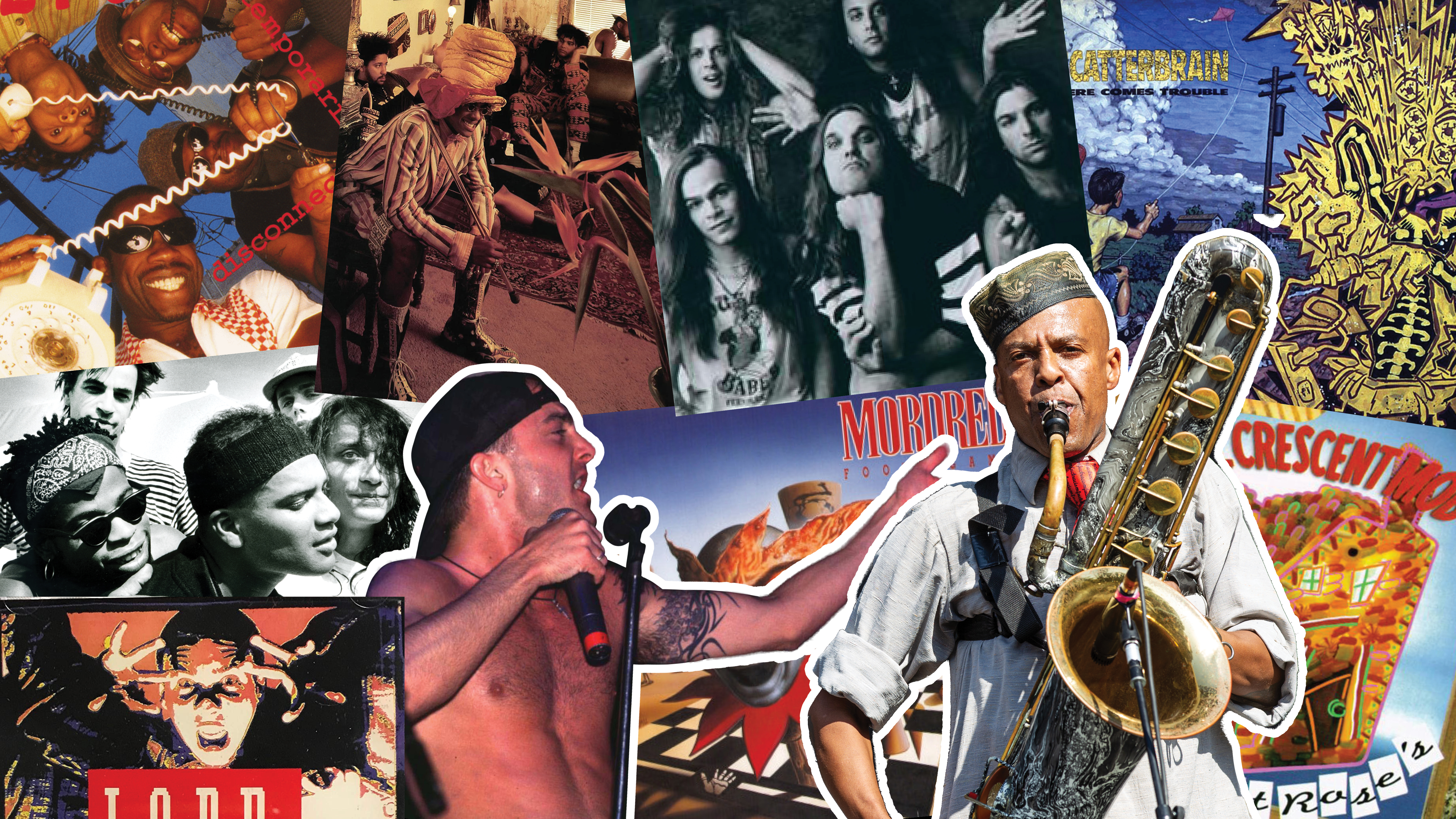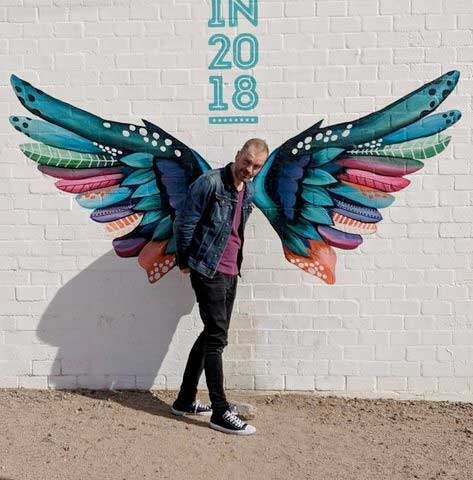For a moment as the 1980s turned into the 1990s, the world went funk metal crazy. Trailblazers such as Funkadelic and Mother’s Finest had gene-spliced funk’s elastic physicality and hard rock’s walloping volume back in the 70s, but it was Living Colour – a revolutionary Black rock outfit from New York – who repackaged the idea for the MTV era, spinning it into commercial gold with their multi-platinum 1988 debut album Vivid. Suddenly every big-shorted, long-haired white boy in Christendom was getting an undercut and making like they were the long-lost offspring of Bootsy Collins.
For every Red Hot Chili Peppers, Faith No More and – sue me! – Extreme, there were dozens of bands who figured they could pop’n’slap their way to stardom (spoiler: they couldn’t). The party couldn’t last, of course – within a couple of years, funk metal had been muscled out by its angrier, shoutier, even-bigger-shorted young cousin, rap metal. The undercuts were grown out, the cut-offs were folded away and the copies of Parliament’s Mothership Connection were taken down the charity shop still in their cellophane wrappers.
Several of the funk metal’s leading lights are still kicking around, but there were plenty of long-forgotten members of the Classes Of ’88-thru-’92 who deserve re-evaluation – bands who had the good tunes, the good vibes and the ‘bitchin’’ grooves. And if you don’t like what you see here? Get the funk out…

Fishbone
Like the Red Hot Chili Peppers and Faith No More, Fishbone pre-dated the funk metal gold rush. Unlike those two bands, the LA punk-funkers never got the breakthrough they were crying out for, despite serving up solid gold classics in 1988’s Truth And Soul and 1991’s sprawling The Reality Of My Surroundings, and having one of the all-time greatest frontmen in sax-hawking livewire Angelo Moore. When guitarist Kendall Jones quit the band in 1994 to join a religious cult, bandmate Norwood Fisher swooped in to rescue him… only to be charged with attempted kidnapping for his troubles. Yeah, that probably didn't help either.
24/7 Spyz
Bronx bombers 24/7 Spyz were signed in the wake of Living Colour’s blockbusting success, instantly swelling the ranks of Black funk-metal bands to, oh, maybe four. Guitarist Jimi Hazel might have telegraphed his intent by lifting his stage name from Jimi Hendrix and late Funkadelic six-string genius Eddie Hazel, but his steel-sharp riffs and the band’s mob vocals meant they could mix it up with metal and hardcore’s finest, dropping funk bombs like Break The Chains and painfully prescient anti-cop broadside Crime Story into the middle of the sweatiest mosh-pit.
Mordred
Grunge didn’t kill thrash, funk metal did. And Mordred were caught standing over the corpse, bloodied knife in hand. These second-generation San Francisco thrashers hit on the novel idea of supplementing their standard-issue Bay Area racket with some thwanging funk grooves. The result proved surprisingly effective on killer 1989 single Every Day‘s A Holiday, prompting a bunch of their peers to follow their lead and ditch Thrash City for Funky Town. Within a couple of years, Mordred realised that the whole James Hetfield-meets-James Brown thing didn’t really have legs and hung up their white hi-tops. The good news is that they got back together a few years ago – older, wiser, funkier.
Atom Seed
The UK had its own funk metal micro-scene, populated by long-forgotten bands such as Scat Opera and US/UK. Kings of the hill were London’s Atom Seed, whose not-so-unique selling point was a pin-up frontman sing-rapping over funky alt-metal. Their exhilarating debut album, 1990’s Get In Line, looked set to turn them the new Faith No More, until the world pointed out that it had a perfectly good Faith No More already, thank you very much. Funk metal is a cruel mistress.
Royal Crescent Mob
Royal Crescent Mob were way ahead of the curve, in that the world didn‘t give a shit about them as far back as the mid-80s. The Columbus, Ohio four-piece were basically the midwestern Chili Peppers, right down to the vintage funk and soul covers (except RCM’s anarchic take on James Brown’s OG funk classic Payback dumps on the Chili’s balloon-thumbed version of Stevie Wonder’s Higher Ground from a great height). They split up long before the funk-metal bandwagon really got rolling, leaving them barely a footnote of a footnote in the history of music. Oh, wait. Dave Grohl loves ’em. There you go. It wasn’t a complete waste of time.
L.A.P.D.
The breakout funk metal band of the last 25 years? Korn. Just check out the fat, clacking grooves that kicked their early songs along. L.A.P.D. was the training ground for future Korn members Reginald ‘Fieldy’ Arvizu, James ‘Munky’ Shaffer and David ‘David’ Silveria. The sound on their sole album, 1992’s Who’s Laughing Now?, is rockier and slap-bassier that what would come later, and singer Richard Morrill’s hardcore-influenced yells are a world away from Jonathan Davis’ anguished man-baby wailing, but you don’t have to squint too hard to see that the pieces were already in place.
Electric Love Hogs
By the early 90s, early glam metal and punk rock chancer wanted a piece of the funk metal action. Electric Love Hogs were exactly those dudes. They started out as a covers band in San Diego, before miraculously locating their inner Sly Stone and roping in renowned funk specialist Tommy Lee of Motley Crue to produce their sole album, 1992’s Electric Love Hogs. But what songs such as Tribal Monkey and Just Another Day lacked in originality – which was pretty much everything – they made up for in yapping, energetic fun. Plus frontman John Feldman went on to produce Blink-182 and Korn, so who’s laughing now, eh?
Mind Funk
Like a funk metal Avengers, Mind Funk – originally Mind Fuck, crazy kids that they were – brought together members of cult underground bands Uniform Choice, Chemical Waste, Celtic Frost and, uh, Nirvana (OK, it was five-minutes-and-out second guitarist Jason Everman, but still). This sort-of supergroup’s electrifying 1991 debut album was edgier, heavier and more psychedelic than anything their contemporaries were serving up. But frothing media coverage never translated into commercial success and the public remained laughably immune to their charms , prompting their eventual split in 1996. Bonus fact: singer Pat Dubar went on to front face-painted rap-metal goombahs Corporate Avenger.
Scatterbrain
Funk metal bands either took themselves really seriously or not very seriously at all. New York pranksters Scatterbrain were solidly in the latter camp. Emerging in 1990 from the ashes of hardcore outfit Ludichrist, they mixed thrashy riffs with bouncing basslines and bursts of sax on aggressively wacky anthems Don’t Call Me Dude and Tastes Just Like Chicken. But for all the smirking Cheech & Chong covers, these boys really could play. Plus Beavis and Butt-head liked ’em, which says it all.
Urban Dance Squad
Holland is famed for many things – tulips, windmills, glassy-eyed tourists off their turnips on the local stinkweed – but funk metal isn’t one of them. Hang on, what do you mean no-one told Urban Dance Squad? The multi-racial Utrecht collective were mixing up funk, rock, hip hop and reggae back in the late 80s with boundary-blurring debut album Mental Floss For The Globe. They even bagged a proper US hit with 1989 single Deeper Shade Of Soul. And today? No one talks about them. We’ll say it again: funk metal truly is a cruel mistress.

